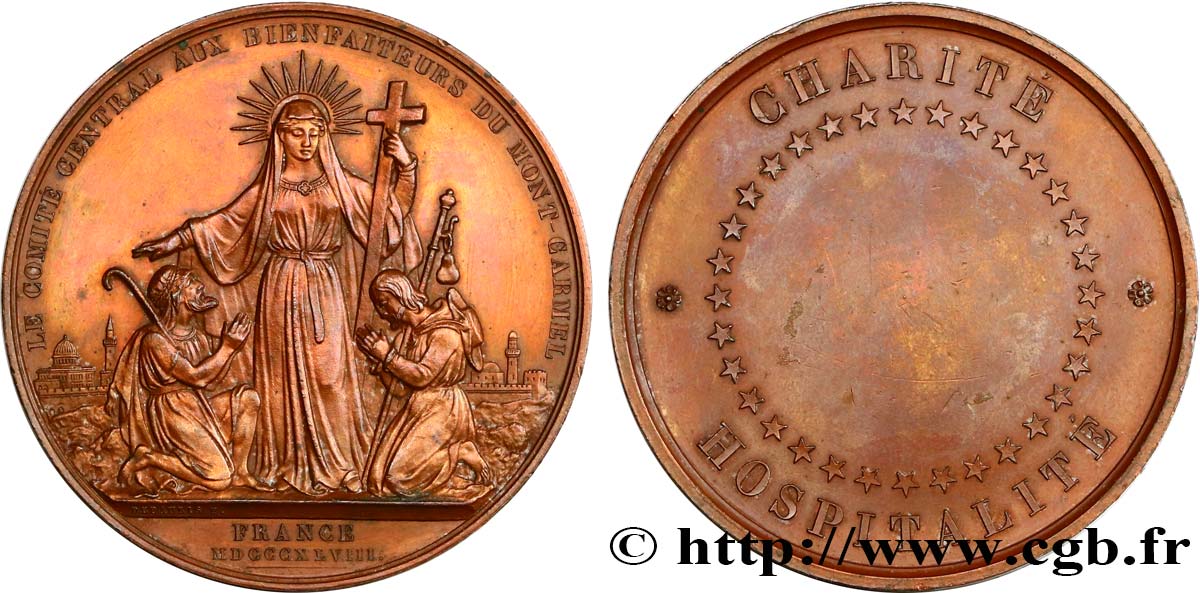E-auction 260-183720 - fme_442059 - II REPUBLIC Médaille pour l’Ordre du Carmel
You must signin and be an approved bidder to bid, LOGIN TO BID. Accounts are subject to approval and the approval process takes place within 48 hours. Do not wait until the day a sale closes to register. Clicking on « bid » constitutes acceptance of the terms of use of cgb.fr private e-auctions.
Bids must be placed in whole Euro amounts only. The sale will start closing at the time stated on the item description; any bids received at the site after the closing time will not be executed. Transmission times may vary and bids could be rejected if you wait until the last second. For further information ckeck the E-auctions F.A.Q.
NO BUYER'S FEE.
NO BUYER'S FEE.
| Estimate : | 50 € |
| Price : | 10 € |
| Maximum bid : | 11 € |
| End of the sale : | 09 April 2018 18:44:30 |
| bidders : | 4 bidders |
Type : Médaille pour l’Ordre du Carmel
Date: 1848
Mint name / Town : France
Metal : copper
Diameter : 55,5 mm
Orientation dies : 12 h.
Engraver DEPAULIS Alexis-Joseph (1790-1867)
Weight : 65,15 g.
Edge : lisse + main CUIVRE
Coments on the condition:
Médaille en bon état mais astiquée anciennement, surtout visible au droit
Obverse
Obverse legend : LE COMITÉ CENTRAL AUX BIENFAITEURS DU MONT CARMEL // FRANCE / MDCCCXLIII.
Obverse description : Vierge portant la croix, debout entre deux pèlerins agenouillés.
Reverse
Reverse legend : CHARITE / HOSPITALITE.
Reverse description : Champ vierge dans un grènetis d’étoiles.
Commentary
L’Ordre du Carmel est un ordre religieux catholique contemplatif. Ses membres sont appelés Carmes (pour les hommes) et Carmélites (pour les femmes). Leur père spirituel est le prophète Élie. Fondé par des ermites sur le mont Carmel en Palestine à la fin du XIIe siècle, les premiers Carmes quittent leurs ermitages au début du XIIIe siècle pour se réfugier en Europe. Après bien des tribulations, l'ordre érémitique se transforme en ordre monastique. Il connaît de nombreuses réformes dont la plus marquante est la réforme instituée par Thérèse d'Avila au XVIe siècle..








 Report a mistake
Report a mistake Print the page
Print the page Share my selection
Share my selection Ask a question
Ask a question Consign / sell
Consign / sell
 Full data
Full data



